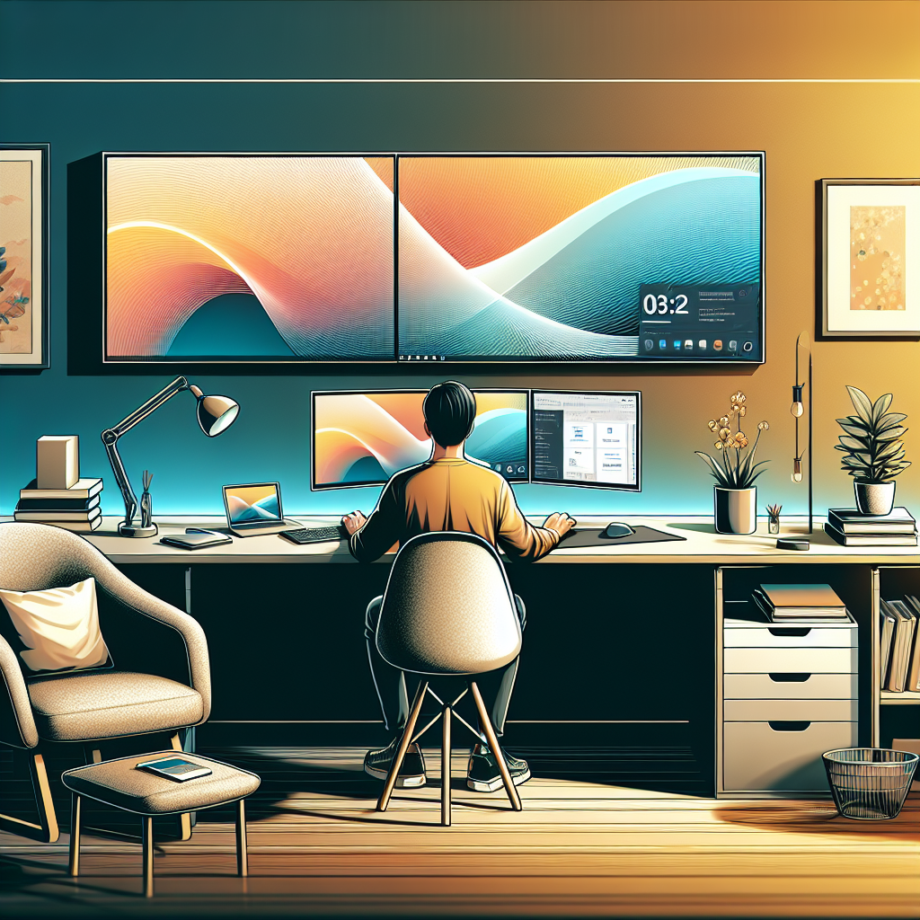
Introduction
Setting up a plasma monitor for dual-screen use can significantly enhance your productivity, whether you’re working from home, gaming, or managing multimedia projects. With the right setup, you can enjoy the benefits of extra screen space, streamline your workflow, and get more done in less time. This comprehensive guide will walk you through the entire process of setting up a plasma monitor for dual-screen use, ensuring that you’re well-equipped to handle any potential challenges along the way.
Requirements
Before diving into the setup process, it’s essential to gather all necessary equipment and ensure compatibility. Here’s a checklist to get you started:
- Primary computer or laptop
- Plasma monitor
- HDMI, DVI, DisplayPort, or VGA cables (depending on monitor compatibility)
- Monitor stand or mount (optional but recommended for better ergonomics)
- Power cables
- Graphics card that supports dual monitors
Additionally, make sure your system is updated with the latest graphics drivers from the manufacturer’s website.
Step-by-Step Guide
Step 1: Connect the Monitor
Start by connecting your plasma monitor to your computer. Depending on the ports available on both your computer and the monitor, you might use HDMI, DVI, DisplayPort, or VGA cables. Follow these steps:
- Turn off both the computer and the monitor.
- Connect the chosen cable to your computer and the plasma monitor.
- Secure the connections to avoid any loose cables.
- Plug in the monitor’s power cable and turn it on.
- Turn on your computer.
Step 2: Adjust Display Settings
Once the monitor is connected, you need to configure the display settings. Here’s how to do it on different operating systems:
Windows
- Right-click on the desktop and select “Display settings.”
- Under the “Multiple displays” section, choose either “Extend these displays” or “Duplicate these displays” based on your preference.
- Click “Apply” to save changes.
- Adjust the resolution and orientation of the displays if necessary.
Mac
- Open “System Preferences” and click on “Displays.”
- Click the “Arrangement” tab.
- Drag the display icons to position them as desired.
- If you want to mirror the displays, check the “Mirror Displays” box.
In both systems, it’s essential to ensure that the primary display is correctly set. This setting ensures that your taskbar, dock, and primary workspace are on the correct monitor.
Step 3: Optimize Display Configuration
After setting up the basic display preferences, fine-tune the dual-screen setup to maximize productivity:
Set the Primary Display
Setting the primary display ensures that the main workspace, taskbar, and system notifications appear on the chosen monitor.
Adjust Color Calibration
Make sure both screens display colors consistently, which is crucial for design and media work:
- Go to display settings.
- Select “Advanced display settings.”
- Click “Color calibration” and follow the on-screen instructions.
Scale and Layout
Adjust the scaling settings to make text and apps appear more prominent and readable:
- Open “Display settings.”
- Under “Scale and layout,” choose a suitable scaling option.
This adjustment can significantly enhance readability and comfort.
Step 4: Arrange Physical Workspace
Setting up your physical workspace properly ensures that you can utilize your dual-screen setup effectively:
- Place the monitors at eye level to reduce neck strain.
- Maintain a distance of at least an arm’s length from the screens.
- Use a monitor stand or mount if needed.
- Ensure adequate lighting to reduce glare and eye strain.
Step 5: Utilize Software Tools
Several software tools can help you make the most of your dual-screen setup:
Screen Management Tools
- Windows Snap: Built-in Windows feature that helps manage open windows with ease.
- Spaces (Mac): Organize different task-specific desktops.
- Third-Party Tools: Applications like DisplayFusion or Ultramon offer advanced features for managing dual monitors.
Shortcuts
Learn keyboard shortcuts to switch between monitors and manage windows efficiently:
- Windows: Win + P, Win + Arrow keys
- Mac: Control + Arrow keys, Mission Control shortcuts
Pro Tips for Enhanced Productivity
To make the most out of your dual-screen setup, consider these pro tips:
- **Dedicated Screen Real Estate**: Use one monitor for your primary tasks and the other for reference materials or communication applications.
- **Consistent Themes**: Keep a consistent wallpaper or theme across both screens for a cohesive look.
- **Task Optimization**: Different apps and tasks may benefit from being displayed on one screen over the other due to resolution or aspect ratio preferences.
Troubleshooting Common Issues
Even the best setups can encounter problems. Here are some common issues and solutions:
Monitor Not Detected
- Check cable connections.
- Try updating or reinstalling graphics drivers.
- Confirm input source on the monitor.
Resolution Issues
- Ensure monitors are set to their native resolutions.
- Update graphics drivers.
Lag or Performance Issues
- Close unnecessary applications.
- Consider upgrading RAM or graphics card.
Conclusion
Setting up a plasma monitor for dual-screen use involves a few simple steps that can dramatically enhance your computing experience. By carefully connecting your monitor, adjusting settings, optimizing your workspace, and leveraging software tools, you can create an efficient and productive dual-screen environment. Follow the steps outlined in this guide, and you’ll be well on your way to enjoying the numerous benefits that come with using a dual-screen setup.
